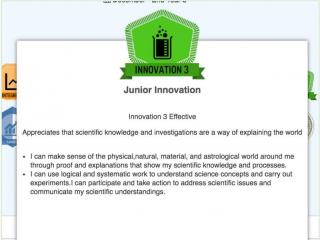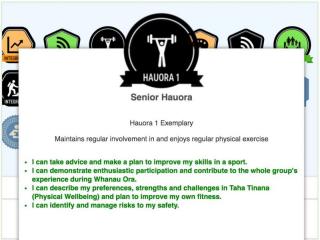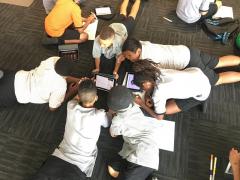Ormiston Junior College (OJC), situated at Flat Bush in East Auckland and established in February 2017, is a middle school for students from years 7 to 10. Although the student population is small at the moment, the school will eventually accommodate 1000 students.
The college is in a new building, constructed as an ILE (Innovative Learning Environment). The new design of the teaching spaces has allowed the school to develop an innovative approach to teaching and learning.
Developing a Graduate Profile
Initially, foundation staff worked to develop a graduate profile based on:
This graduate profile was then used to develop a range of digital learning badges and the criteria for earning them. The progressions for each badge are loosely based on the SOLO taxonomy, awarded at Emerging, Effective and Exemplary levels in a desire to provide a link to the Achieved, Merit, Excellence language of NCEA assessment. Exemplary criteria are at level 4/5 of the curriculum, where those at levels 3/4 focus on student-centred practices. Some badges are easier than others, and the system always gives students room for improvement, fundamental to the principles of gamification that have been found to encourage student participation and engagement.
The badging system
- Criteria for badges include skills, knowledge and learning dispositions. Hauora, relationships and integrity are important. The criteria give credit for the application of knowledge, not simply the acquisition.
- Students "bid" for badges and these are awarded after a process of self, peer and teacher assessment. A fundamental goal is to develop self-regulated learners. Assessment is integrated into the students’ learning experiences.
- Students curate their own learning through self and peer assessments, and through the presentation of evidence of achievement in learning artefacts. Expectations are that the bidding, pitching and curating of learning and achievement are written in descriptive language to tell a story, far richer than test scores. Narrative assessment provides the context and individualises the circumstances in which the student achieved their learning.
- Our teachers work with the students to ensure that students achieve curriculum coverage in their "bidding" for badges; that is, students cannot choose only those areas that they like or are good at.
Information on student achievement via the badging process is available to parents and whānau via the school’s student management system. They can see that badges are being worked on and when they have been awarded. Progress and achievement information is summarised and digitally available for parents at the end of each term. Criteria for the badges allow teachers to put this information together simply and in a form that the community can understand. The information is digital but can be printed as learning stories should parents and whānau desire.
Examples of badges
Below are some examples from screenshots taken directly from learners' pages on the student management system. (Note: Fringed edges are junior – years 7 and 8 and solid edges are senior – years 9 and 10.)

Select the image to view at full size.

Select the image to view at full size.

Select the image to view at full size.





